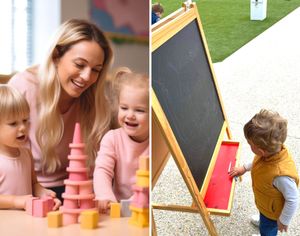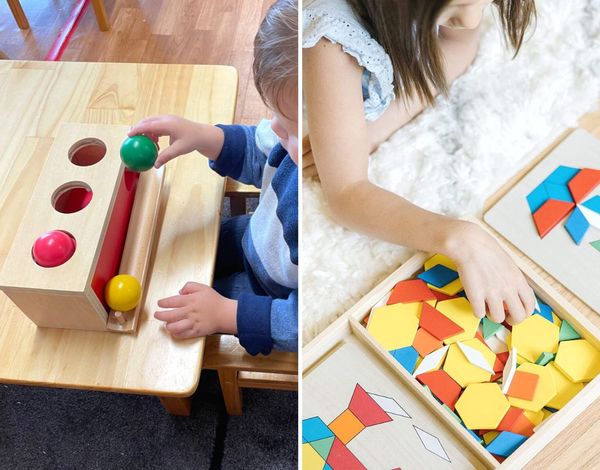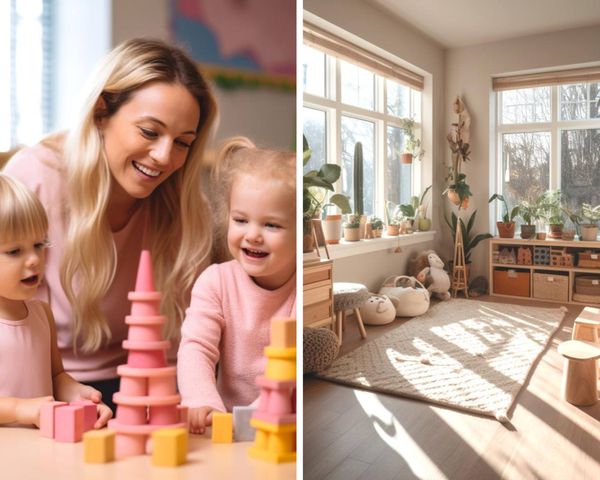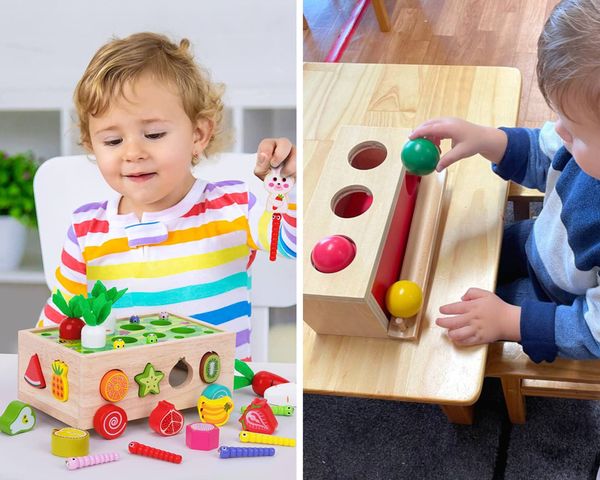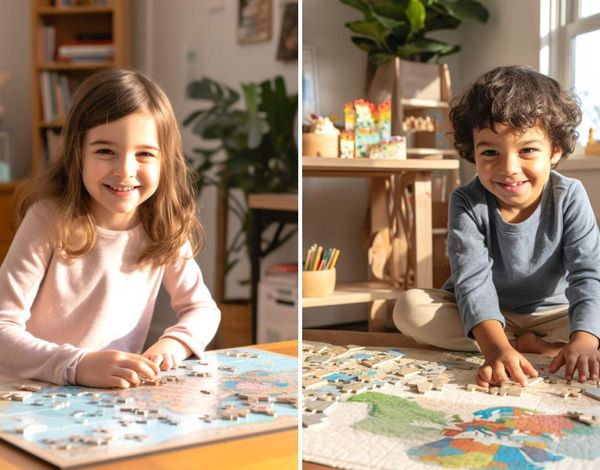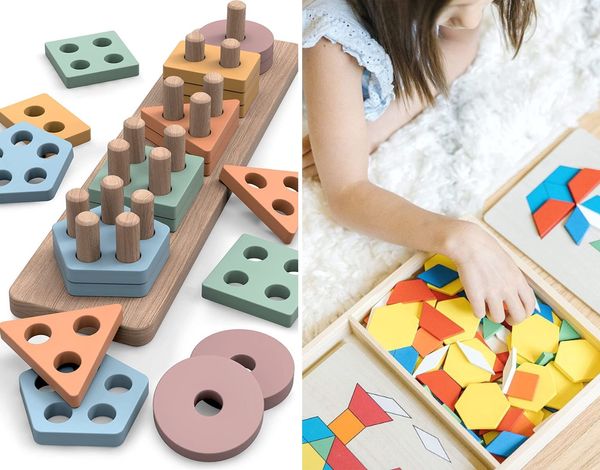From the curious clutches of my own tiny tots, I've seen the captivating charm of Montessori toys, and their profound ability to ignite an insatiable curiosity for learning in young minds. It's akin to lighting a sparkler, and watching the starry tendrils twirl into the night – mesmerizing, magical, and momentous in the education and development of our little ones.
As an avid Montessori enthusiast and parent, I've journeyed through the enchanting universe of the best Montessori style toys, with tales of triumph, the occasional tumbles, and yes, a toddler-powered trail of wooden toys in our wake!
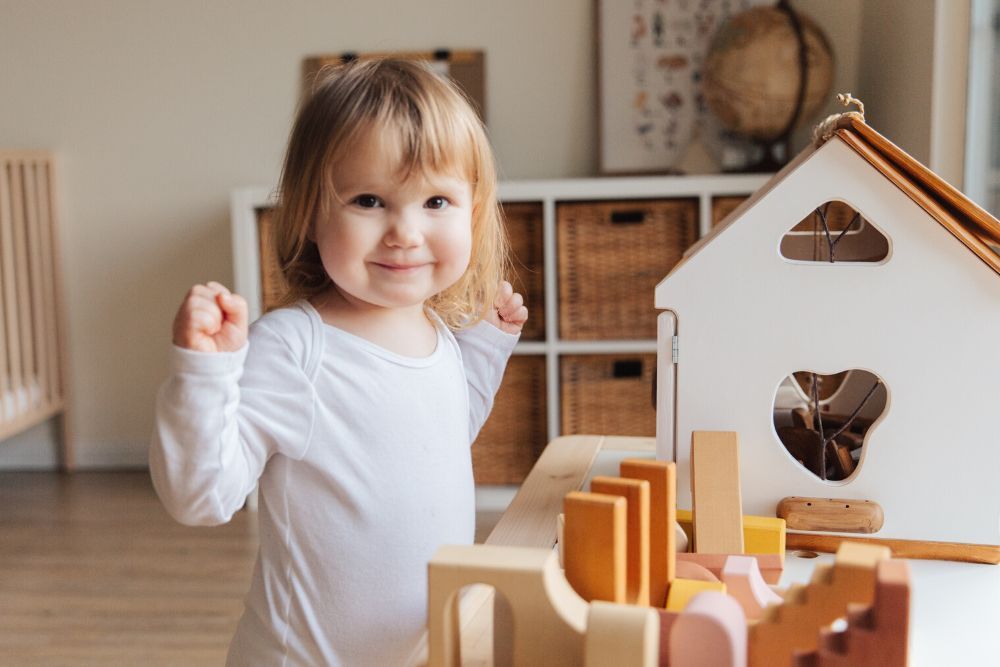
So, why Montessori toys? They're the vibrant bridge that marries play with purpose, kindling children's independence and imagination in a way that's as natural as breathing. Crafted from materials that are a tactile treat, like wood, these toys often whisper simplicity but shout out a universe of possibilities for cognitive exploration.
Picture your child as a mini Christopher Columbus, venturing into the uncharted waters of problem-solving, sensory discovery, and motor development - that's the power of a humble Montessori climbing toy or a set of wooden blocks.
While there's no golden stamp declaring "Official Montessori Toy", numerous playthings dance beautifully to the rhythm of Montessori principles. Think classic LEGO bricks, sensory balls, or an intriguing array of objects that serve a greater purpose - to kindle the flame of learning while being tremendously fun!
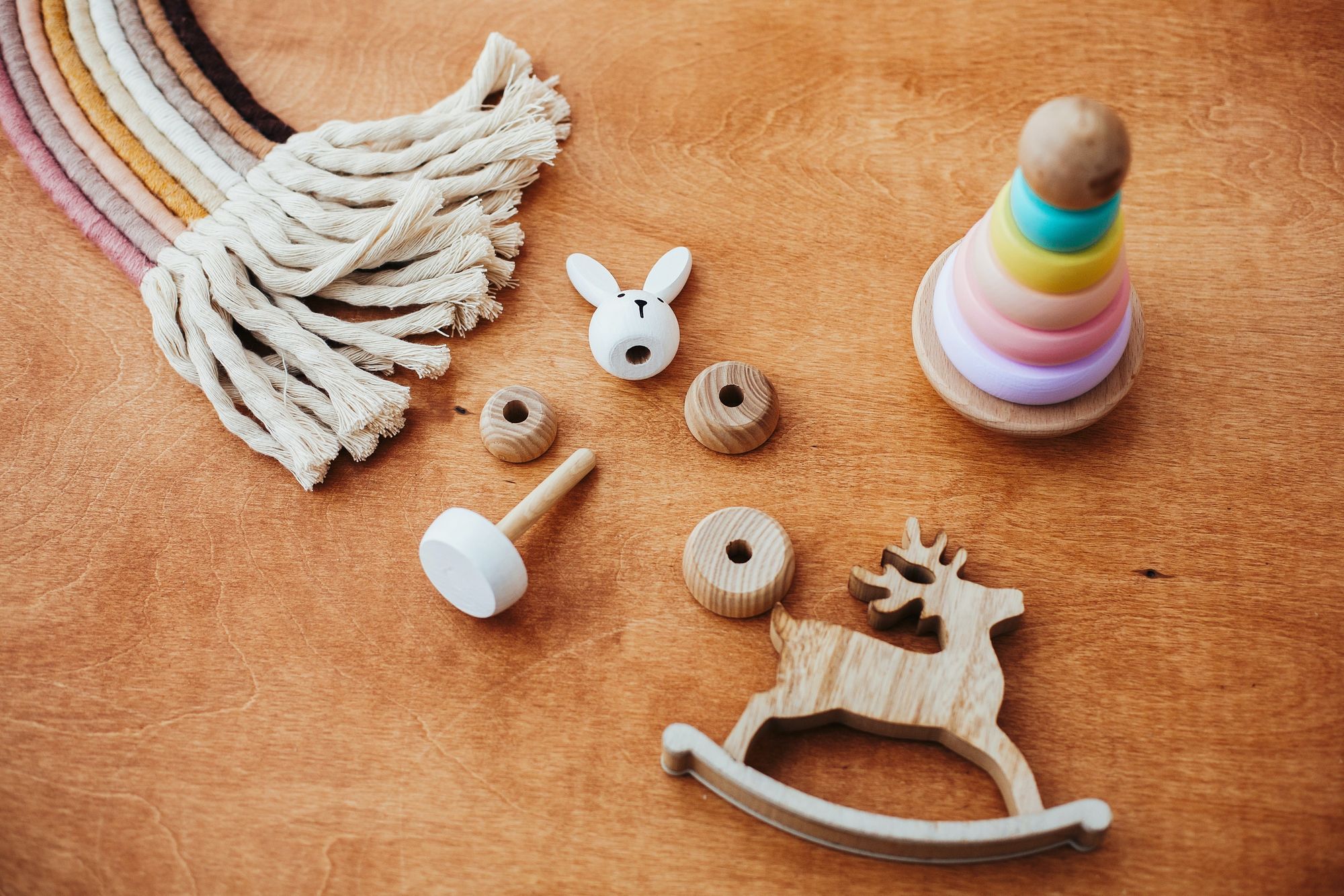
In this captivating journey, we'll explore:
- Brief overview of the principles of Montessori and their influence on toys,
- How to decipher the Montessori toy puzzle, from distinguishing features to developmental benefits,
- Your age-by-age guide to Montessori toys,
- A walkthrough to choosing the right toys, safety considerations included,
- Crafting the perfect prepared environment with toys,
- How to blend Montessori-inspired toys, play, and learning,
- Navigating the Montessori toy market with a quick buyer's guide,
Along the way, I'll share personal anecdotes of my own Montessori adventures, providing insights and tips that can help guide your choices.
Join me as we step into this delightful landscape of play and learning. This isn't just about selecting toys—it's about being an active participant in your child's extraordinary journey of self-discovery, exploration, and skill development.
Ready? Let's dive in!
The Genesis of Montessori Education
Montessori education, rooted in the pioneering work of Dr. Maria Montessori over a century ago, nurtures the "whole child" — covering cognitive, physical, linguistic, social, and emotional aspects.
A key revelation is that Montessori-inspired toys are not just playthings, but an extension of this philosophy. They echo the tenets of hands-on learning, self-paced exploration, and simple yet purposeful design, creating an environment that awakens curiosity, encourages skills, and cherishes each child's unique learning pace.
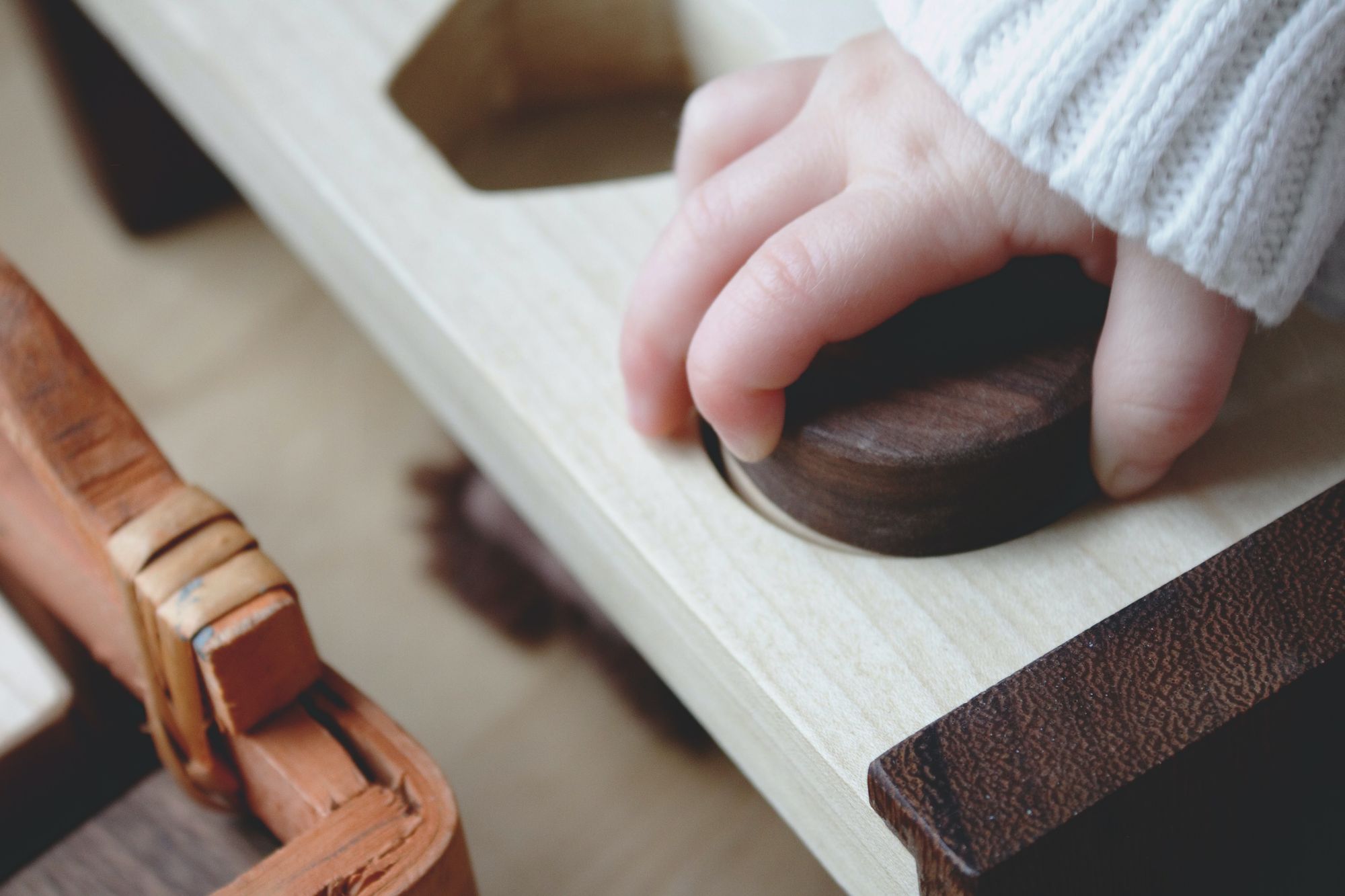
This convergence of philosophy and play, artfully captured in these toys, makes them a cornerstone of enriching child development - the subsequent sections will go into detail in explaining this link.
For those eager to explore deeper into the Montessori philosophy, its application at home, or to better understand Montessori-style parenting, I invite you to traverse the troves of knowledge shared in my other articles. Embark on this journey here for Montessori philosophy, here for guiding Montessori principles at home, and here for an in-depth look at Montessori parenting.
Decoding the Montessori Toy Puzzle
The Magic of Montessori Toys in Child Development
As a fellow adventurer on the parenting journey seeking the true north, I've come to appreciate that toys aren't just playthings, they're essential tools for fostering a child's independence and creativity. In my own escapades, I've found the best Montessori toys, created from simple materials like wood, metal, and even glass, infuse a natural, richly engaging touch that seems to ignite little imaginations.
Their allure? Simplicity. It's in their straightforward designs that little ones discover essential life skills, like coordination, understanding object permanence, and developing those nifty fine motor skills. Plus, their open-ended nature nudges children towards uncharted territories of independent play and creative exploration - sparking those delightful "aha!" moments.
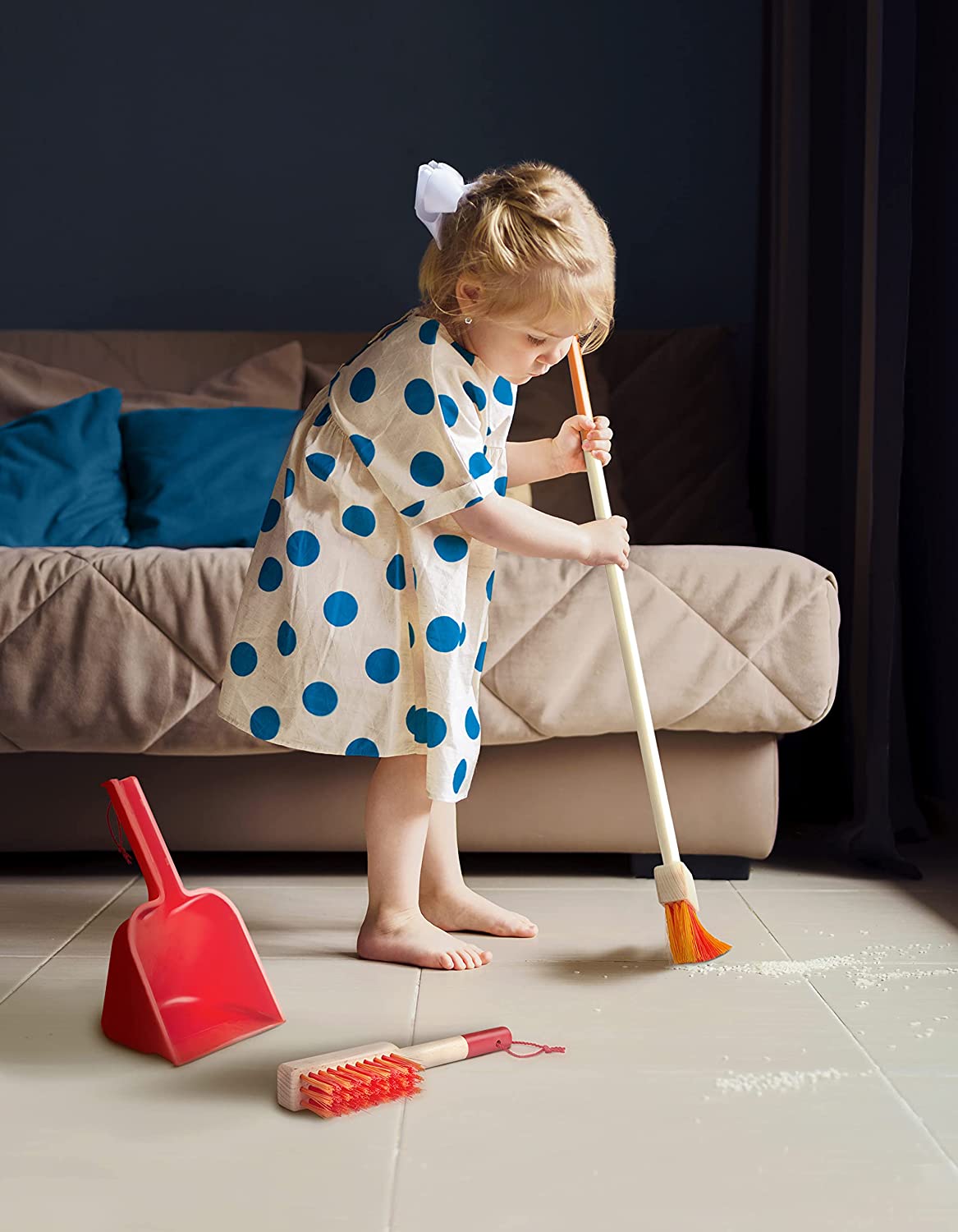
The Unmistakable Charm of Montessori Toys
The true beauty of Montessori toys, at least from my travels, lies in their distinct features that subtly whisper Montessori philosophy. Let's take a peek:
- They're crafted from natural materials like wood, beautifully sidestepping plastic wherever possible.
- Their design, simple yet intriguing, fuels children's independence and creativity.
- They give children the liberty to learn at their own pace - a treasure in itself.
- They're usually reality-based, offer sensory experiences, and engage little ones in purposeful work.
My favorites? Montessori wooden toys like wooden blocks, puzzles, sensory materials - each a precious cornerstone for an educational and joyous playtime saga.
Montessori Toys vs. Traditional Toys: A Gentle Contrast
Now, let's gaze at the playful dance between Montessori and traditional toys. In this jig, the difference isn't so much in the toys, but in their soul. Again, rarely will you find a label in reality that states "montessori toy over here" - you need to look at what Montessori method outcome does this help me achieve and what will it teach children?
While traditional toys often twirl with colors, fantasy, and entertainment, Montessori toys take a graceful waltz towards nurturing growth and learning. They're handcrafted from natural materials like wood, metal, and glass - an ode to the Montessori method's reverence for reality.
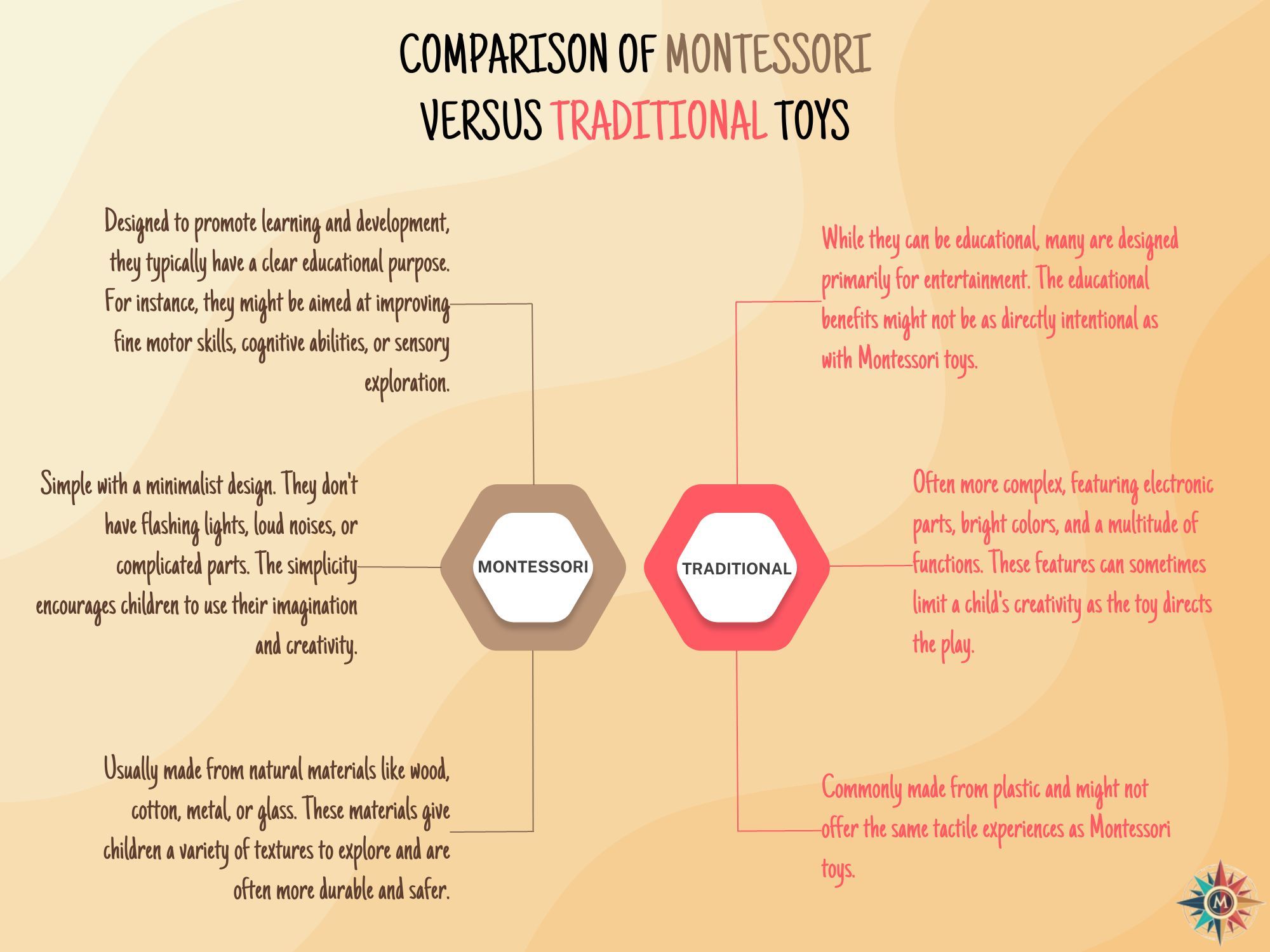
They boast a simple, functional design spotlighting a particular skill or concept, unlike their traditional counterparts that sometimes dazzle with visual appeal.
As I've journeyed through this Montessori landscape, I've come to the heartening realization that Montessori toys provide a distinctive, enriching, and truly educational experience for our children. They are more than just toys - they are silent teachers, subtly encouraging our young explorers to bloom in their unique and wonderful ways.
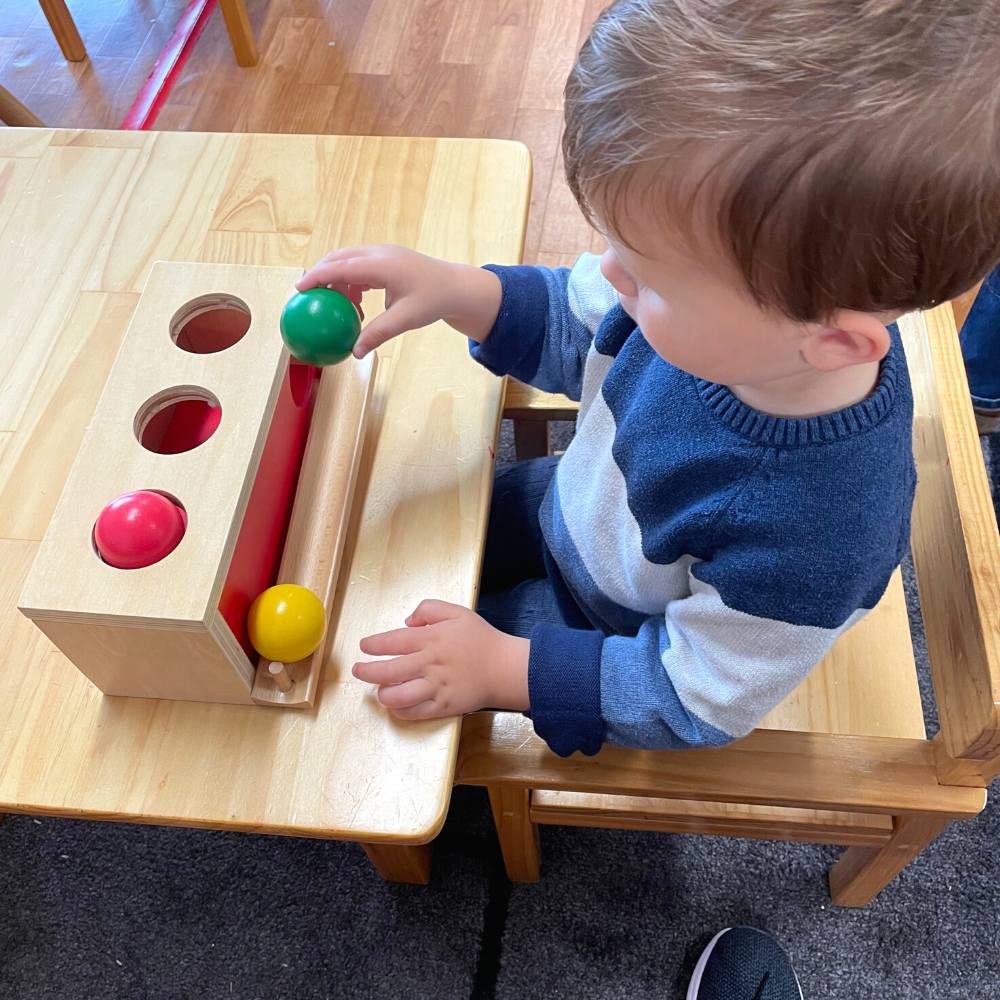
So, next time you find yourself contemplating over Montessori climbing toys or your child's next playtime companion, remember, it's not just a toy - it's a stepping stone in their grand adventure of self-discovery and learning.
Age-Specific Montessori Toys: A Breakdown
Montessori Toys for Infants
As an infant, a child's primary focus is on exploration and sensory experience. Toys for babies that I would recommend include simple, high-contrast, and realistic toys that encourage the development of senses such as touch, sight, and hearing.
Soft rattles, black and white mobiles, and textured sensory balls are perfect examples of Montessori toys for infants. These open-ended toys foster curiosity and help infants achieve important developmental milestones.
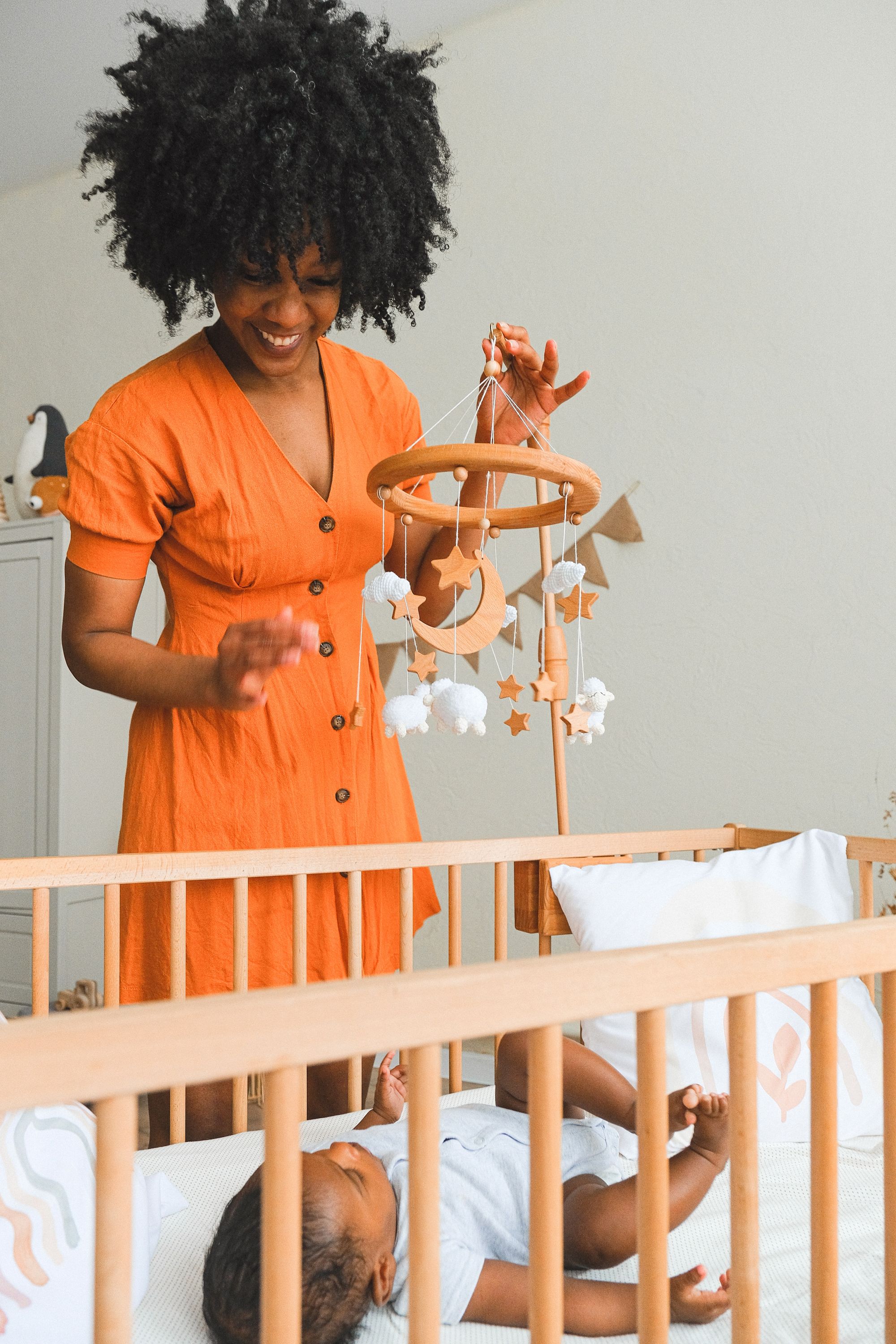
Montessori Toys for Toddlers
During the toddler years, children start to develop their movement, coordination, and motor skills. Montessori toys for toddlers should support their growing curiosity and motor skill development. Some excellent toys for this age group include:
- Balance boards: These balance boards, or rockers, encourage movement, balance, and coordination.
- Solid wood stacking and nesting toys: They help with grasping and hand-eye coordination.
- Lacing kits: These help in developing fine motor skills and focus.
I'd also suggest incorporating practical, open-ended toys that replicate real-world objects, such as play kitchen sets or gardening tools, to foster creativity and imaginative play.
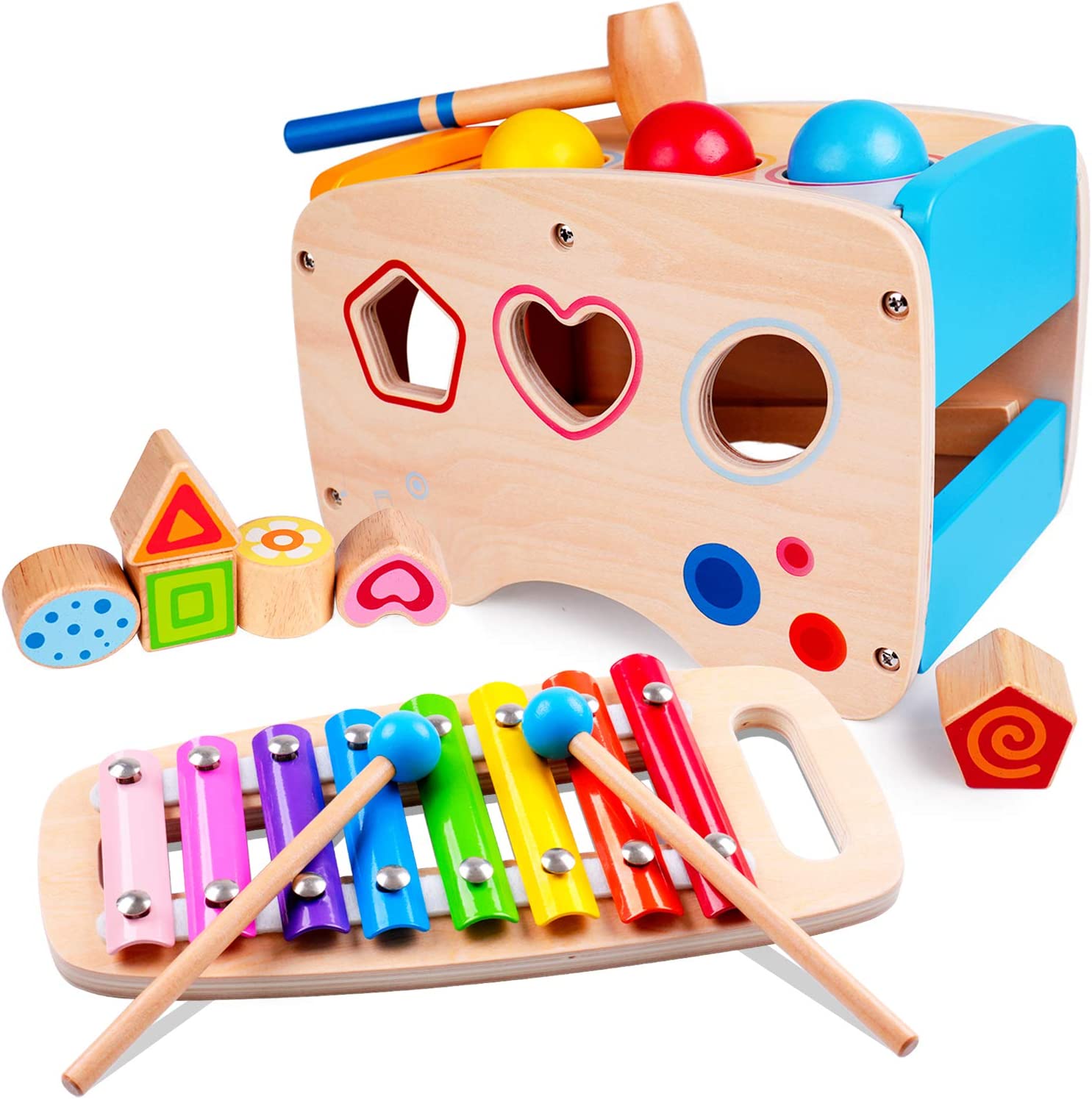
Montessori Toys for Preschoolers
Preschoolers have expanded curiosity and begin to explore specific interests. Montessori toys for preschoolers should promote hands-on learning, foster creativity, and support the development of various cognitive, as well as gross motor skills. Some great options include:
- Math manipulatives: Introduce basic mathematical concepts in a fun, playful manner.
- Puzzles: These time-honored tools promote problem-solving and cognitive development.
- Craft materials: Artistic outlets support creativity and help refine fine motor skills.
- Climbing toys: Play gyms and Pikler triangles encourage physical development and foster confidence.
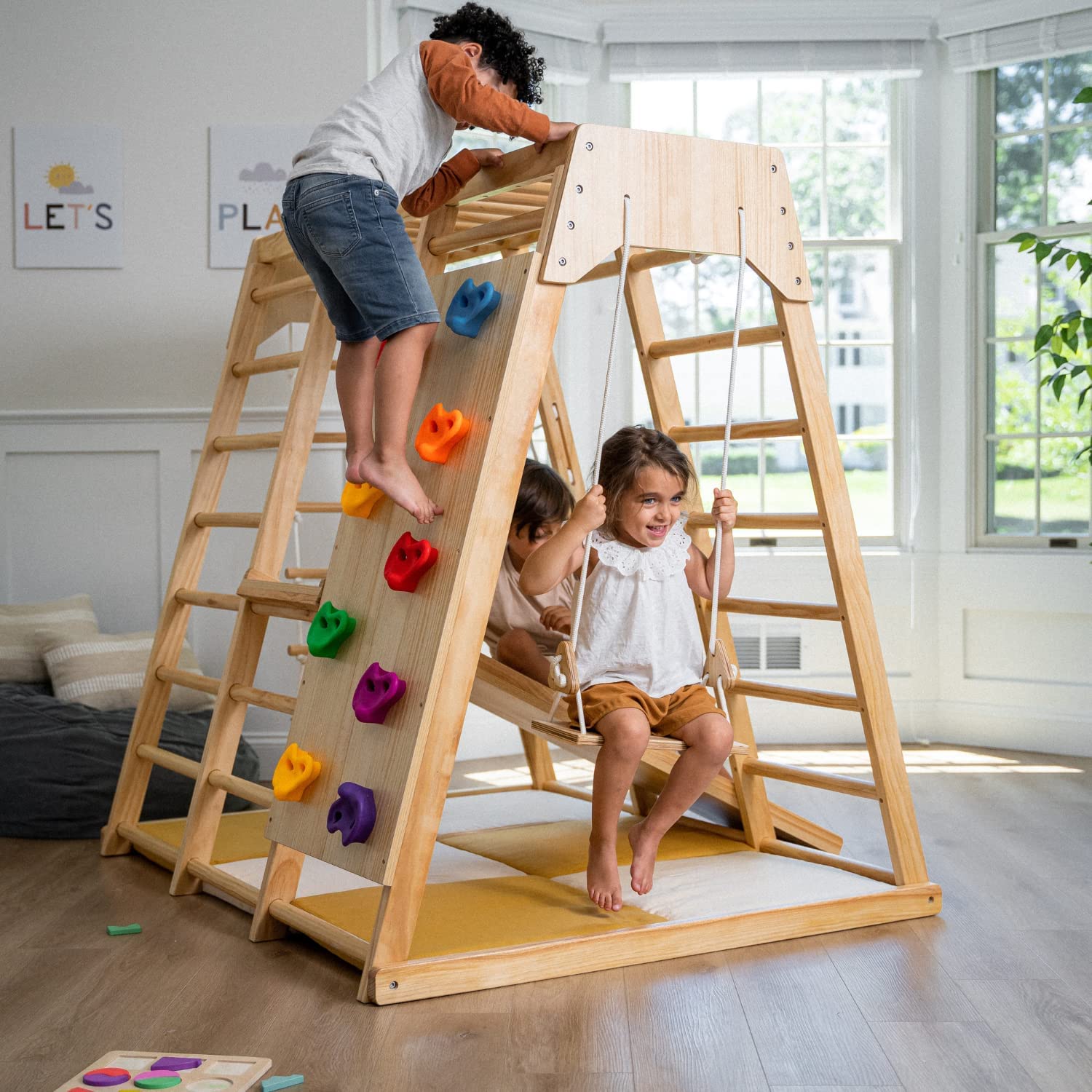
In addition, offering open-ended toys such as building blocks or art supplies allows for self-guided exploration and the development of individual interests.
Montessori Toys for Older Children
When it comes to older children, their cognitive abilities and interests are even more expansive. Montessori toys for this age group should focus on promoting deeper learning, problem-solving, and creativity. Some favorite Montessori toys for older children include:
- Construction sets: They provide opportunities for creative problem-solving and hands-on learning.
- Science kits: These help kids explore scientific concepts through experiments and observation.
- Board games: They promote critical thinking, strategic planning, and social skills.
It's important to provide a variety of Montessori toys that facilitate open-ended play and cater to a child's interests, helping them achieve personal goals, develop a broad range of skills, and foster a lifelong love of learning.
Your Guide to Choosing Montessori Toys
Essential Factors to Consider When Buying Montessori-Style Playthings
When it comes to selecting Montessori-style playthings for my little explorers, I tend to follow a few essential principles. I aim for toys that stoke curiosity and foster critical skills, from coordination to problem-solving. I've learned that the best Montessori-friendly toys balance simplicity with function, just like the wooden blocks, balance boards, and knobbed cylinders that are personal favorites in our home.
Quality reigns supreme in the world of Montessori, with toys often hewn from naturally-sourced, solid materials like wood. This not only lends a wholesome aesthetic but also ensures the toys stand the test of both time and toddler.
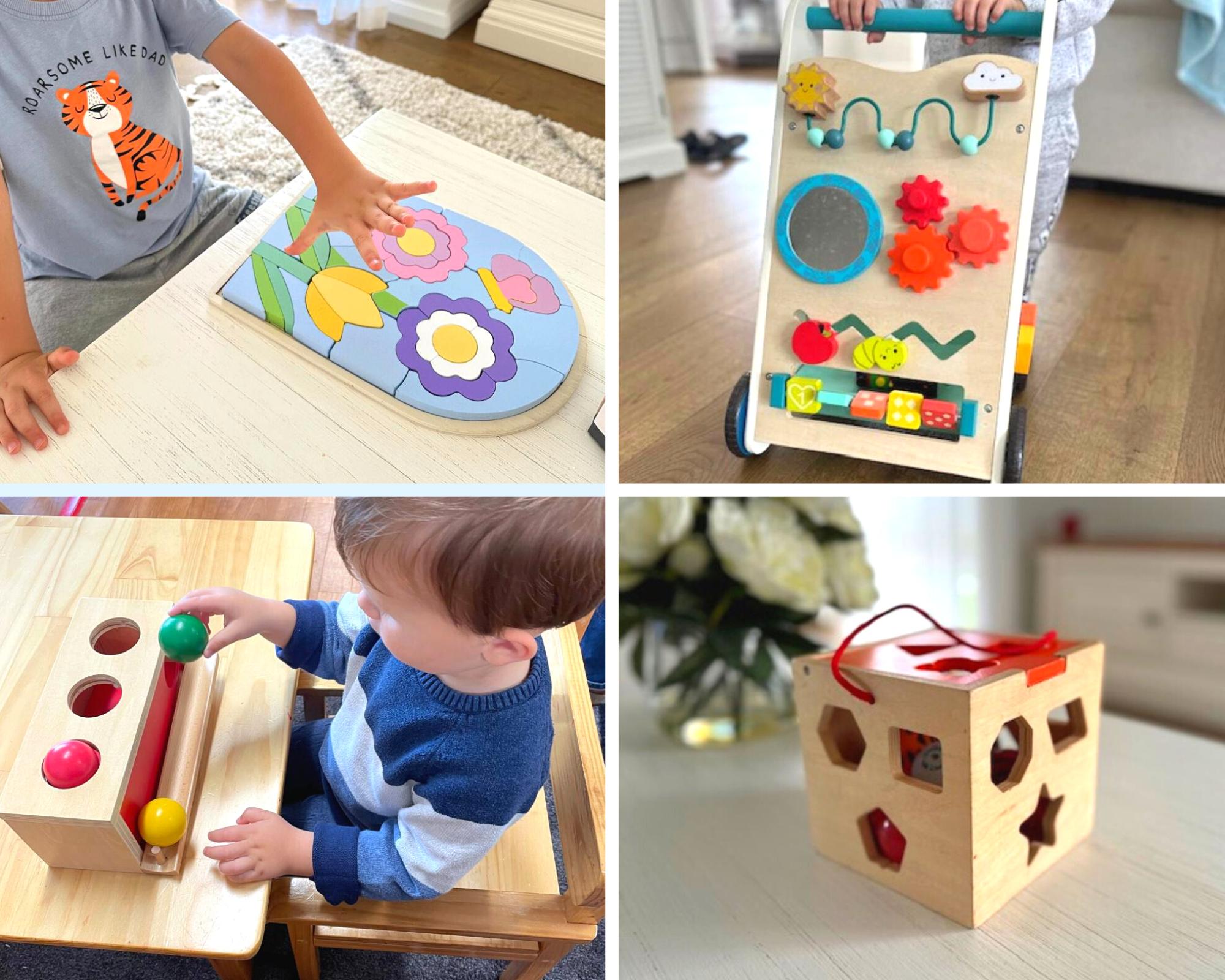
Here's a parenting tip: minimise the numer of battery-operated toys, instead opting for playthings that require active participation from your little one, thus enhancing hand-eye coordination and focus.
Lessons from the Trenches: My Experience with Montessori-Style Toy Selection
Here are some Montessori-aligned pointers I’ve picked up while curating my children's playroom:
- Age appropriateness: Toys should mirror your child's development stage. For instance, lacing and stacking playthings are a hit with preschoolers, while knobbed cylinders can come into play earlier.
- Educational potential: Aim for toys that offer a hands-on, multi-sensory experience, sparking your child's senses and facilitating their understanding of their surroundings.
- Variety: Sprinkle in toys that offer different types of play and learning opportunities. Think puzzles, building sets, sorting toys - anything that sparks exploration.
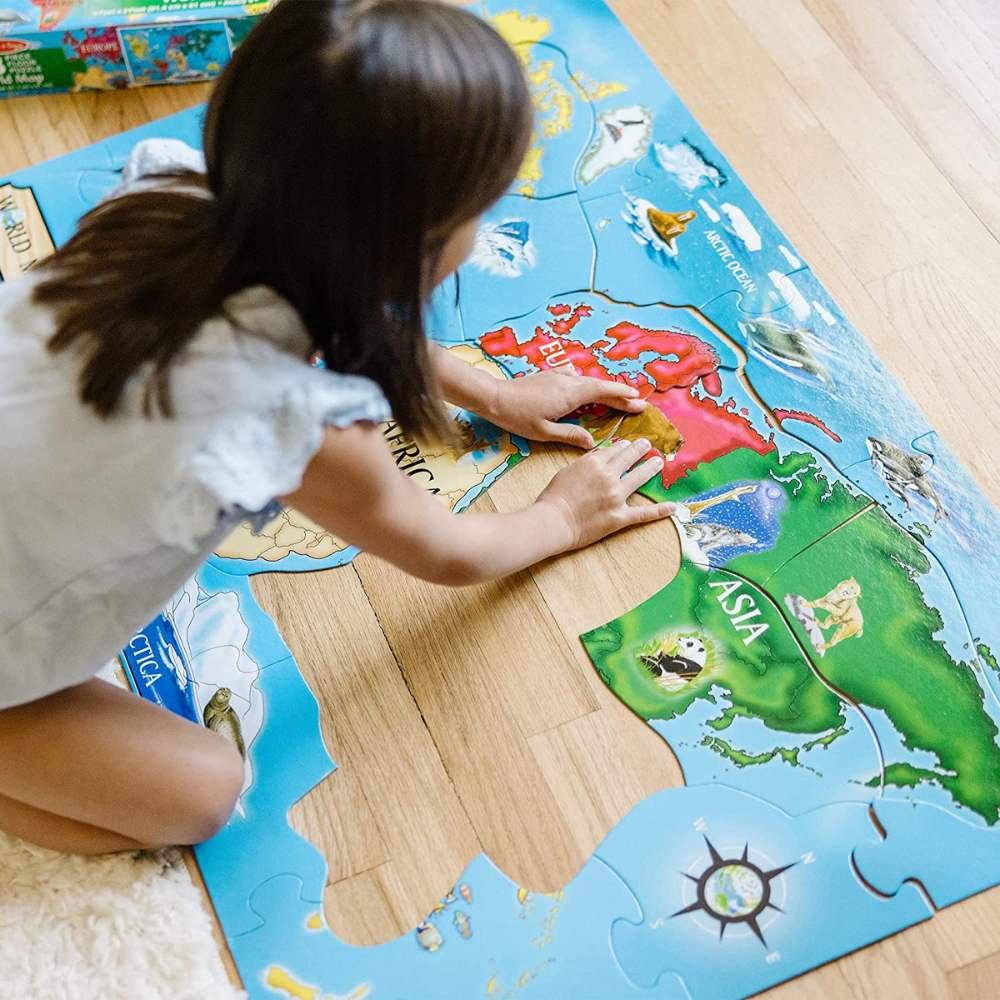
Safety: Your Priority When Choosing Montessori-Style Playthings
Above all, the safety of my children reigns supreme while they engage in play. Here's what I watch out for when picking out Montessori-style playthings:
- Quality materials: Opt for playthings constructed from sturdy, non-toxic materials like solid wood.
- Appropriate size: Ensure that the toys don't pose a choking hazard, particularly when choosing for younger children.
- Ease of cleaning: Given that Montessori learning is a hands-on affair, toys should be a breeze to clean and maintain.
In your quest for Montessori-friendly playthings, remember to strike a balance between quality, safety, and variety. This equilibrium will foster a stimulating play environment that promotes development through exploration and hands-on learning, helping your child flourish.
And, as we'll discuss next, there's plenty of joy to be found in selecting Montessori-friendly toys for various age groups.
Crafting the Prepared Environment: The Montessori Toy Way
In curating the ideal play space for our little ones, my wife and I have found that carefully chosen educational toys can act as the cornerstones of a nurturing and stimulating environment.
These aren't just random playthings, but rather, as we explored in the earlier sections, they're tactile pieces that pique curiosity, promote creativity, and stimulate sensory development and coordination. Each of these carefully chosen items, resplendent in their variety of colors and textures, contributes to an environment that fosters self-directed exploration and growth.
Within our child-centric wonderland, you'll find the charming wooden sorting box (check it out on Amazon), an excellent aid for teaching colors, shapes, and honing fine motor skills. Additionally, a sensory cart teeming with diverse textures invites tactile exploration. Together, these, along with other high-quality play pieces, foster a space that nurtures growth in all facets of a child's development.
Infusing Your Child's Playroom with Educational Play Pieces: Practical Tips
When it comes to integrating these educational toys into my child's playroom, I've discovered a few practical strategies:
- Simplify: As we discussed in the guide for choosing toys, less is often more. Keeping the playroom decluttered with a rotation of meaningful play pieces is key.
- Purposeful Play: Each toy has a specific purpose, echoing the principles we discussed about educational value and variety in the earlier guide.
- Aesthetics Matter: Good quality and pleasing aesthetics cultivate concentration and an appreciation for beauty.
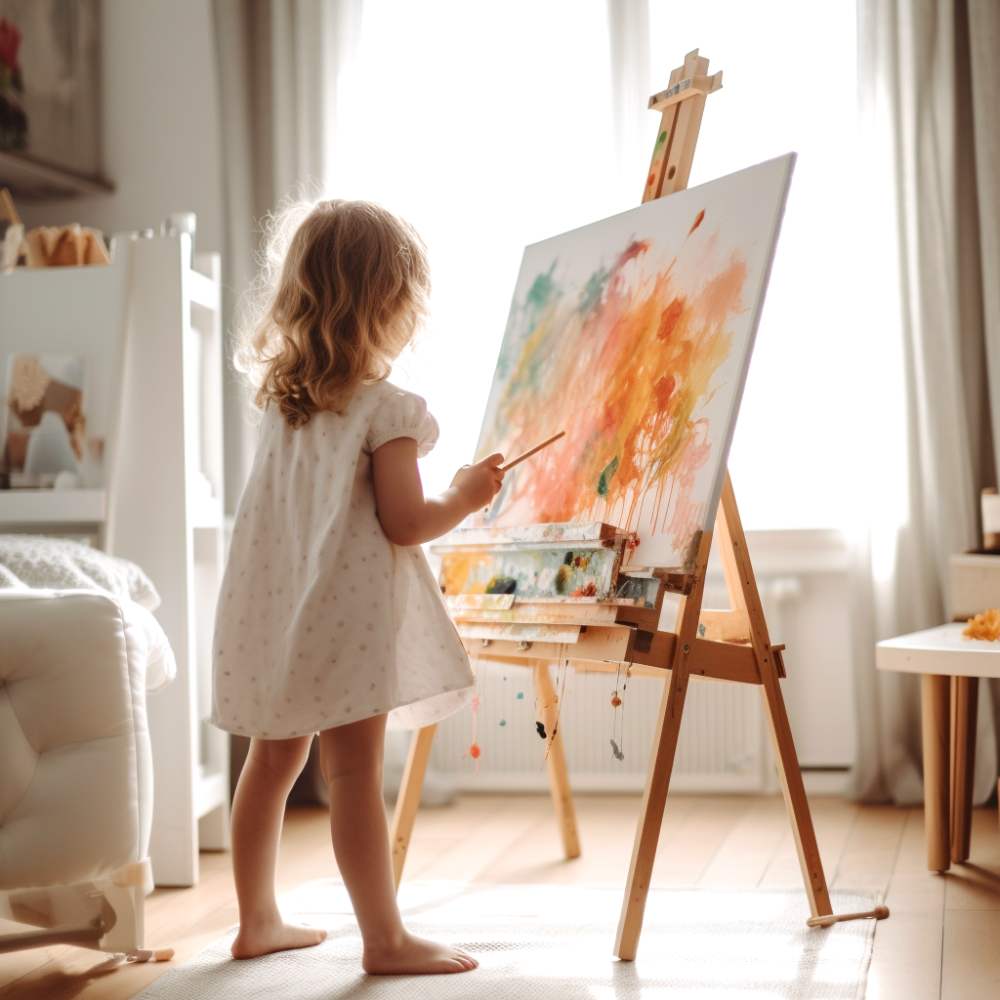
On the last point, I know for the pursists, there is a need for neutral colors, but I believe this is an opportunity to add in some beauty without going overboard and listen to your child on what excites them while still maintaining alignment with the overall philosophy - in summary, balance this guidance with what makes YOU happy and brings you closer to your child's true north.
Fostering Self-Directed Play with Educational Toys
The hallmark of a Montessori-inspired environment is to nurture independence. With this in mind, each piece I introduce aims to inspire self-directed play:
- Real-life Reflections: The playthings mimic real-life objects, making the connection between their playtime and the world around them clearer.
- The Beauty of Less: A limited selection of toys at a time encourages them to focus and explore each one in-depth.
- Tailored Approach: In line with the Montessori learning philosophy, I pay keen attention to my little one's unique interests and adjust the environment to match their pace and preferences.
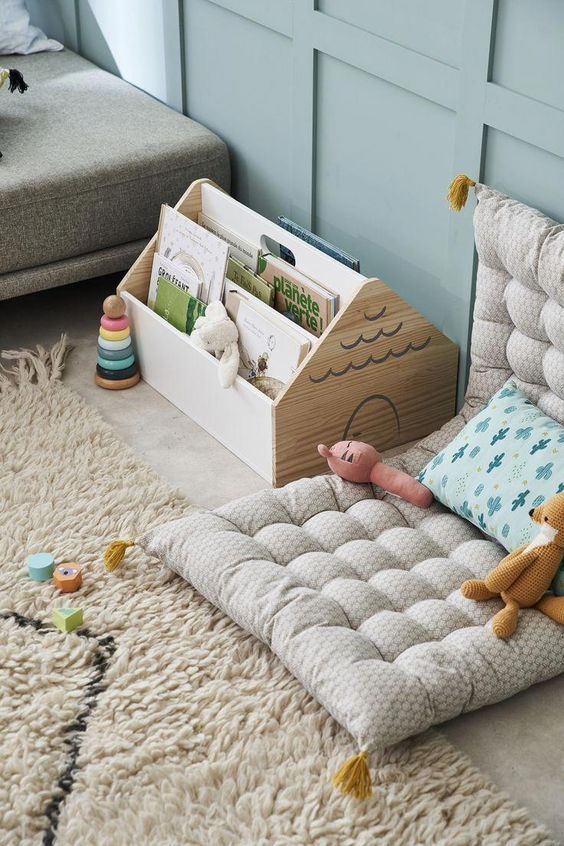
In creating this nurturing environment, you're fostering your child's growth and self-directed exploration. Through a thoughtful selection of educational toys and a supportive environment, you're instilling a love for learning and independence in your child - and once you do, your little life compass needle will be gravitating towards north very quickly.
Navigating the Montessori Toy Market: Popular Picks and Buying Guide
We've chatted about creating the perfect environment and selecting the right educational tools, so now, let's dive into the exciting adventure of buying Montessori toys.
You might recall my earlier stories about my first foray into this territory; the dizzying array of options made my head spin like a top. But I was determined not to let it become a game of pin the tail on the donkey! But worry not, I've got you covered with a simple guide and some popular choices from my blog for different children ages.
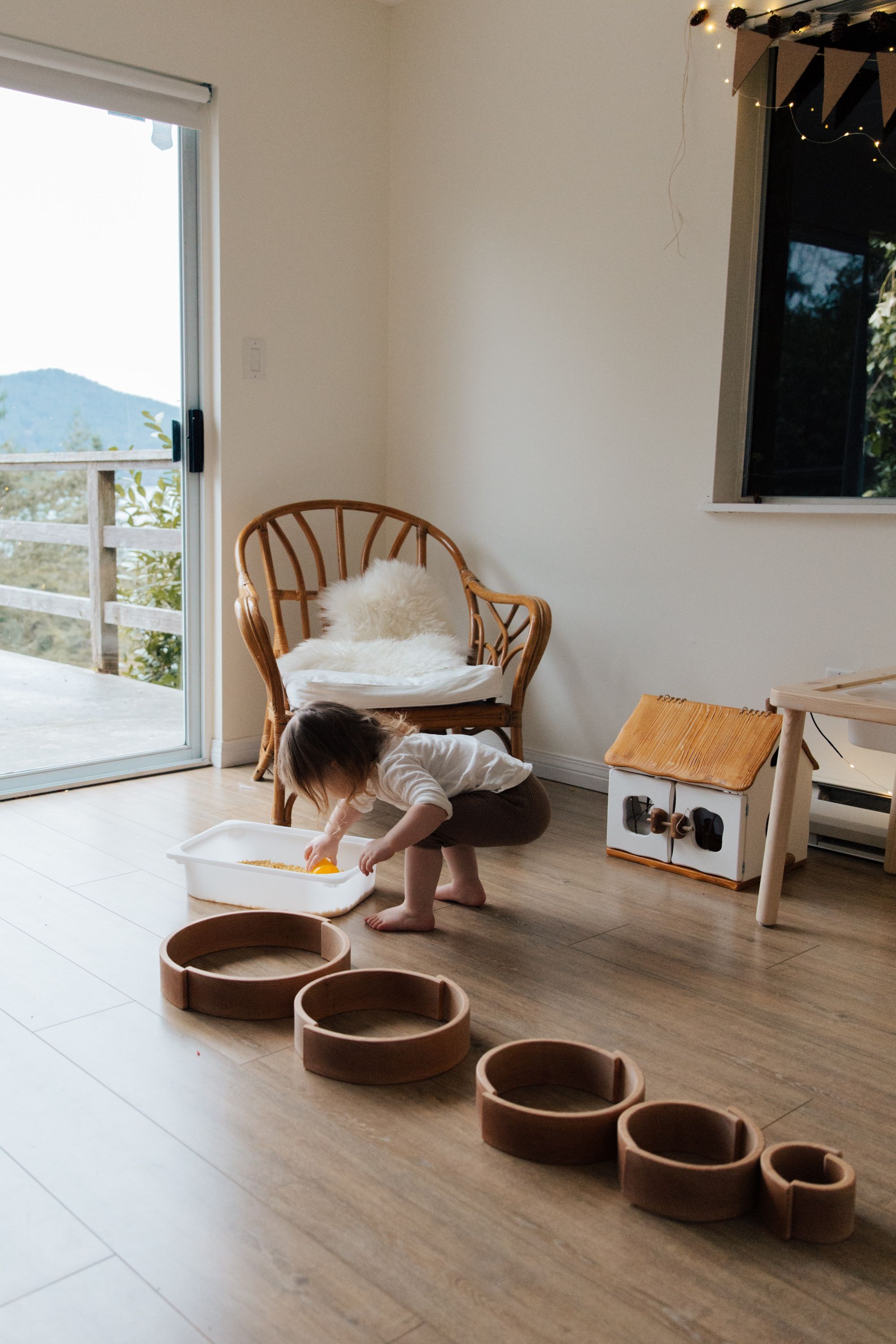
So, keeping our spirits high and our eyes on the Montessori principles, let's break down the process into some handy criteria to focus on:
- Natural Materials: I'm always on the hunt for toys made from the bounty of nature: wood, cotton, or silk. These tactile marvels make pretend play feel a touch more real and provide our curious little ones with a tangible connection to the world around them. It's like inviting a squirrel into our child's playroom, without the mess, of course!
- Open-ended Play: The Montessori toy guide wouldn't be complete without toys that boost creativity and spark open-ended play. These toys are the superheroes of versatility, stepping into whatever imaginative role our children dream up, be it an explorer, scientist, or even a pastry chef! They encourage our little ones to explore, experiment, and problem-solve, flexing those critical thinking muscles.
- Scale, Simplicity, and Safety: Remember the three S's when selecting toys. They should be just the right size and complexity for your child's developmental stage. Think of it like finding the perfect pair of shoes - not too big, not too small, but just right! And always safety first - let's save the small, fiddly bits for when they're older and less likely to explore their world mouth-first.
Now, on to some cherry-picked choices. Instead of a straight-up list, I've taken a tour around my blog and handpicked some articles for you to make your life easier, each reviewing top options for different ages:
- Montessori Puzzle Maps
- Toys for 3-year-olds
- Toys for 2-year-olds
- Montessori Cleaning Set
- Montessori Play Gym
- Montessori Rocker
- Wooden Toys
- Montessori Beads
- Play Kitchen
- Bookshelf
- Best Pikler Triangle
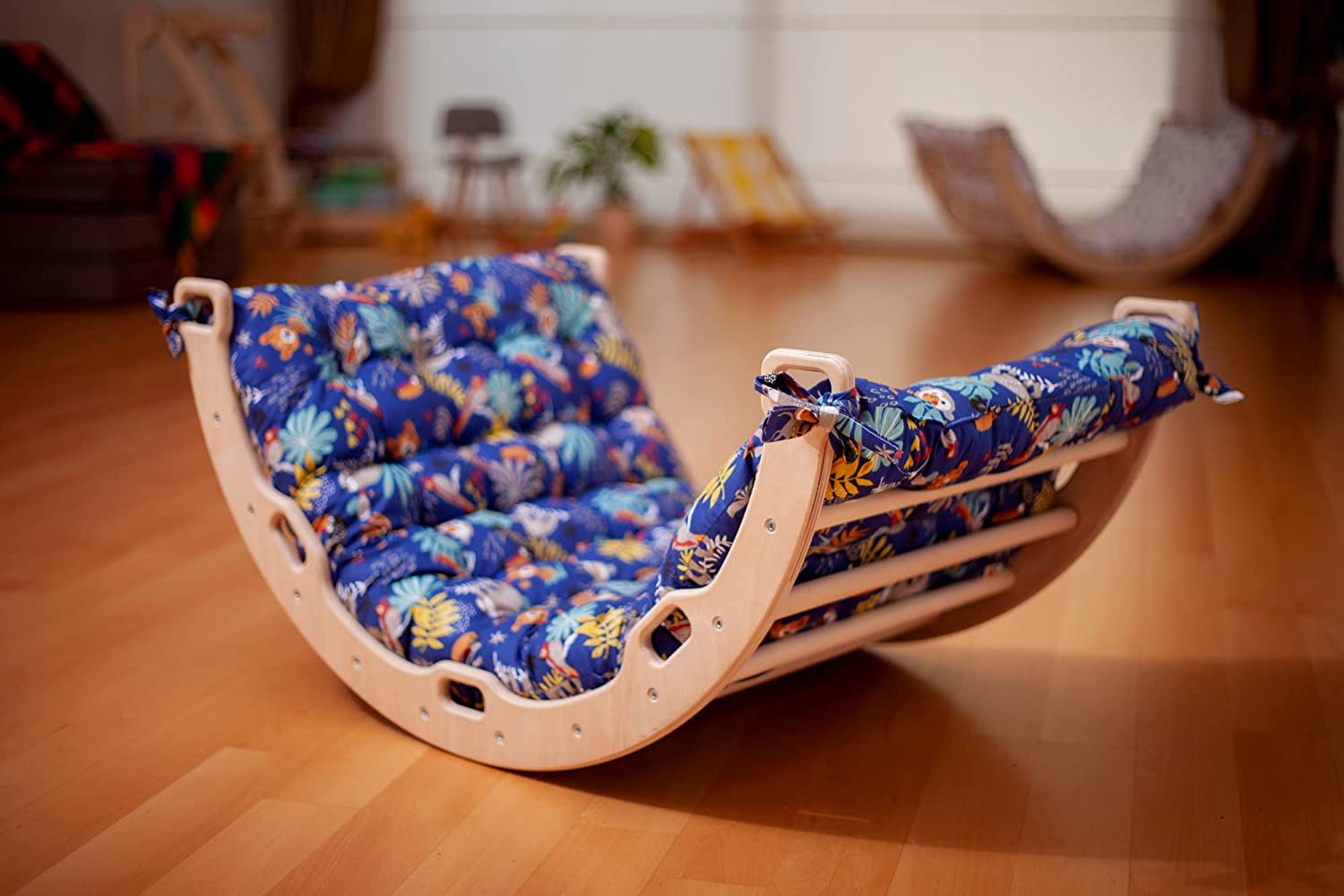
Using these guidelines and resources, you'll soon be setting sail on the high seas of Montessori parenting. I really hope these help you out, because I truly understand how difficult this can be sometimes. Reach out to myself at admin@themontessoricompass.com if you have any specific questions.
Our Closing Thoughts
As we've navigated through the intriguing world of Montessori toys, we've discovered they're not just mere playthings. Oh no! Each one, in its simple and captivating way, is a silent teacher nurturing our little ones' hand-eye coordination, problem-solving, and the admirable art of independent thinking. There's a reason we parents find ourselves fascinated, sometimes chuckling at the irony, of how a simple wooden block can hold more allure than a flashy, singing spaceship!
And these unassuming heroes of the playroom do more than just amp up cognitive prowess. They are nurturing architects of emotional and social development. They're like the best pals your kids didn’t know they needed, guiding them towards greater independence, concentration, and that priceless sense of 'I can do it!'.
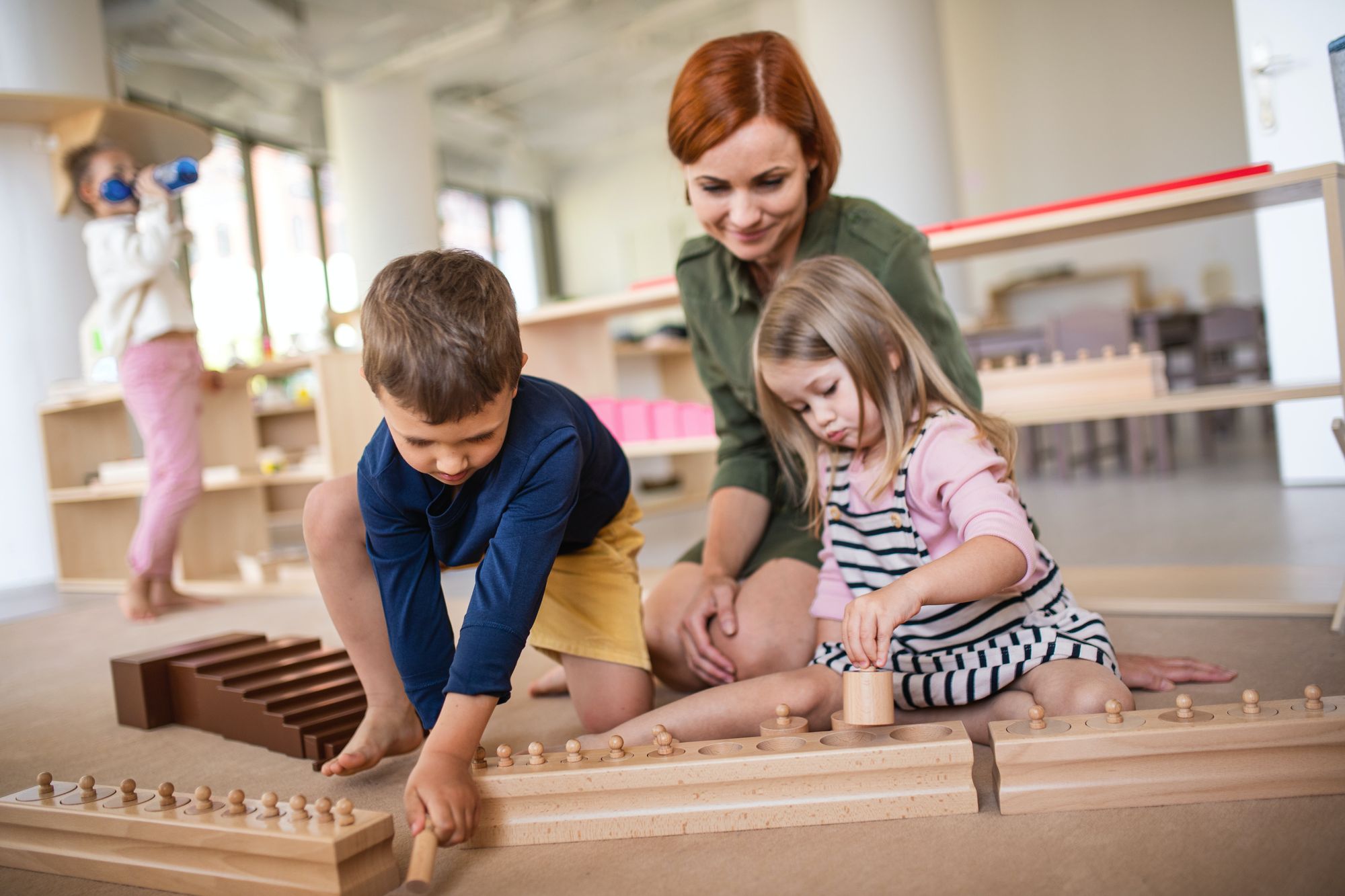
So, my fellow parental comrades considering this Montessori route, I'm with you, pom-poms at the ready! Having walked the Montessori path with my own little minions, I can vouch for these unsuspecting play-tools. They’re not just 'toys,' they’re development powerhouses! Together with these, we’re not just filling up playtime, we’re paving the golden path to their future.
Embracing the Montessori toy revolution doesn't need to be a sudden coup d'état in your child's playroom. It's more of a peaceful transition, swapping the 'all singing-all dancing' gadgets for their low-key, yet power-packed Montessori counterparts. As we make this switch, we’re offering our little explorers opportunities to sharpen their skills while nurturing a deep, abiding love for learning and exploration.
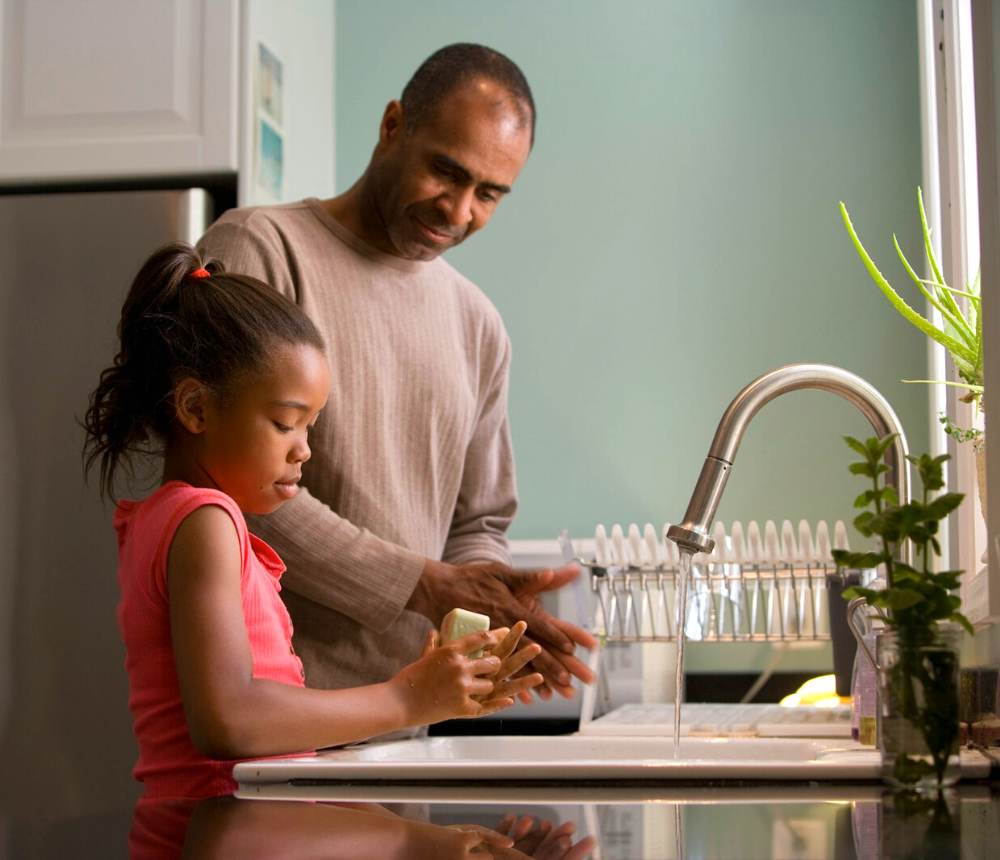
So, let's hop aboard this Montessori ride. It’s sure to be one part enlightening, two parts fun, and a dash of 'what just happened?' as we watch our kids blossom into self-confident learners.
Amid the whirlwind that parenting undoubtedly is, let's remember our guiding compass: love, respect, and understanding. Our destination? Helping our children discover their unique path and true north in this grand adventure called life.
Buckle up, it's going to be a remarkable journey!


